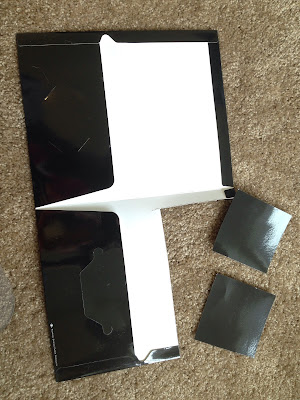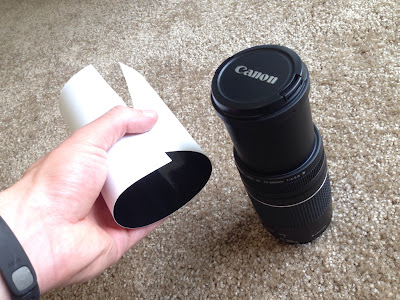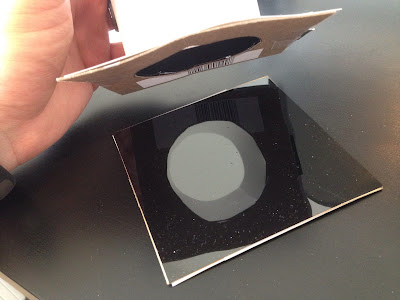The only real cost was for the 4"x4" sheet of Thousand Oaks Optical black polymer solar filter. You can by it in bulk to bring the cost per square inch down, but this 4 inch section is more than enough for what I'm making and was about the same price as a pack of 5 solar eclipse cardboard viewing glasses. I chose this over Mylar because it is supposed to make the sun appear a more natural orange rather than blue-green.
I've read other posts about making ones out of CDs or x-ray paper or whatever - I wouldn't skimp on this just in case. It's just $10 and shipping took 1 day, don't mess around, just get a sheet of the good stuff. It still beats a threaded camera filter for $50-$65 using the exact same black polymer.
I've read other posts about making ones out of CDs or x-ray paper or whatever - I wouldn't skimp on this just in case. It's just $10 and shipping took 1 day, don't mess around, just get a sheet of the good stuff. It still beats a threaded camera filter for $50-$65 using the exact same black polymer.
This is the final product, and the photos below show the sequence of making it out of tape and a black school folder.














Just finished my solar filter for my dslr it worked. I used any emergency blanket instead of the polymer. Had to cut 3 sheets it turned out OK. Thanks saved a lot of money.
ReplyDeleteHi Tara, glad to hear things worked out with the Mylar blanket! I hear the rule of thumb is that if you can see a regular light bulb through it that it is too thin, so hopefully the 3 layers was enough to stay safe. When I hold mine up to a lamp (or anything dimmer than the sun really) it looks solid black.
ReplyDeleteWanted to prepare for the partial eclipse on 20 March, so I put together a solar filter and documented the process - https://www.youtube.com/watch?v=2uFIOCyPBIU
ReplyDeleteAnd here's the first proper image! - http://www.astrobin.com/full/153025/0/